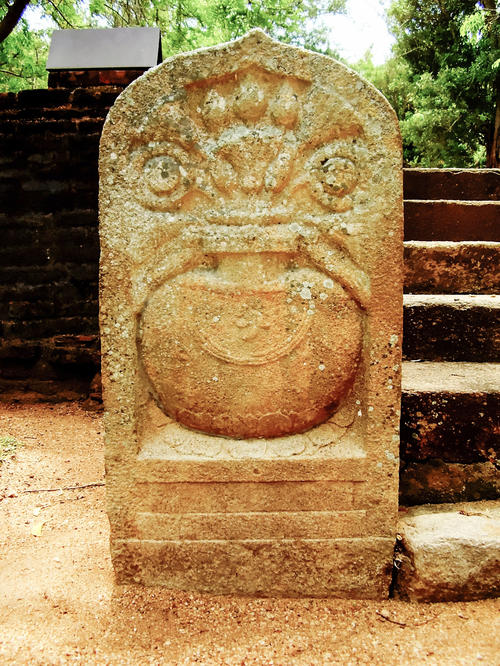Ancient water governance in the Rajarata kingdom
An ancient Gard stone from Abayagiriya monastery. This particular type of Gard stones are placed mainly to protect water sources.
The ancient water management and harvesting system of Sri Lanka is a unique example of a system jointly developed by the rulers and local people. The number of inscriptions referring to private ownership is direct evidence for this hypothesis. Early and Late Brahmi inscriptions such as Parumaka (chief), Vapihamika or Vavihamika (proprietors of the tanks) suggest that irrigation schemes were owned and managed by the different stakeholders.
Further, inscriptions mention hired labour and the trading of ownership of irrigation works and taxes. From 2nd century BCE onwards, sources mention further different irrigation agriculture professions such as flow operators and proprietors of the tanks. In contrast official announcements like strict laws and regulations are unknown from the initial period. Bureaucratic official orders and firm regulations on water governance are repeatedly found from the beginning of the 9th century CE. According to the ancient records, a well-established revenue system for the water management systems is visible from the initial period. Buddhist temporalities played a key role in water management and governance in the Rajarata kingdom. Most records referred to numerous grants of irrigation and their incomes to Buddhist monastic entities. In conclusion, water governance in the Dry Zone of Sri Lanka was not initially based on bureaucratic statehood, but developed as a community-based local system.
